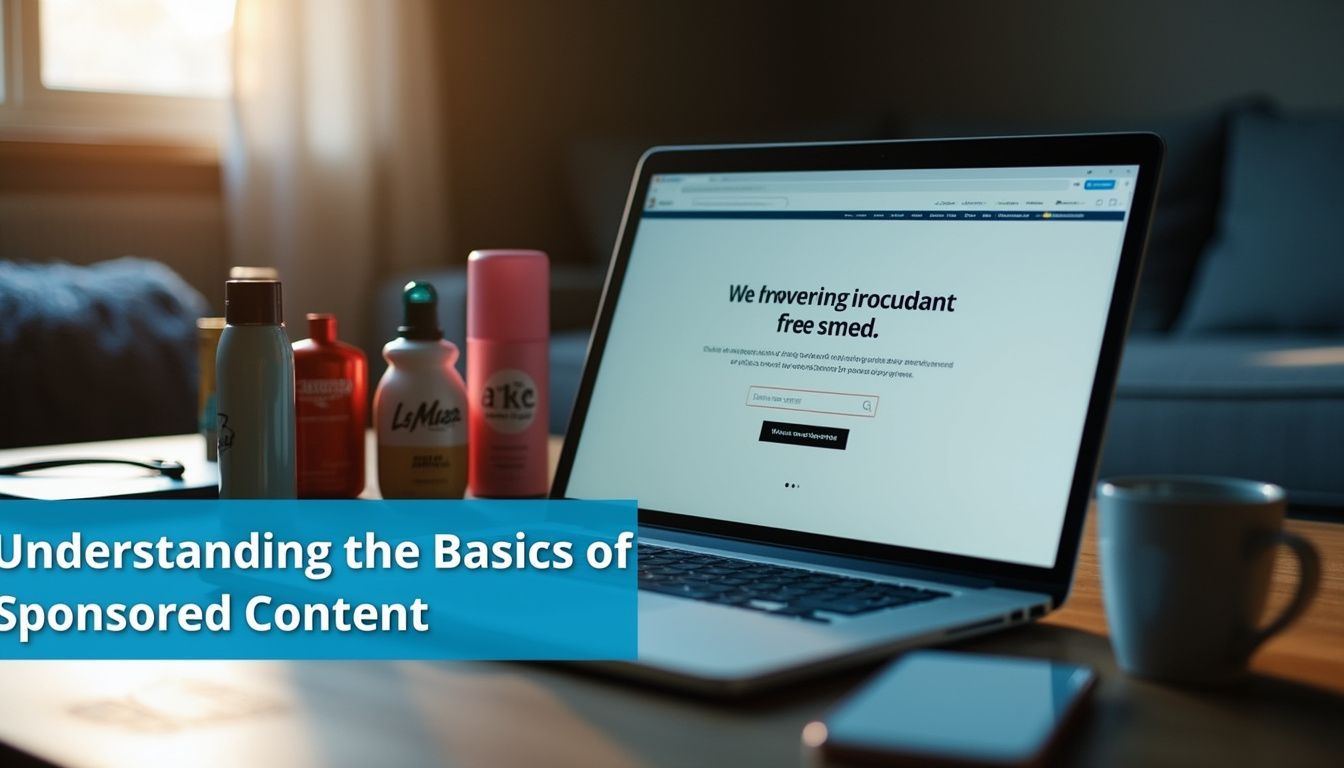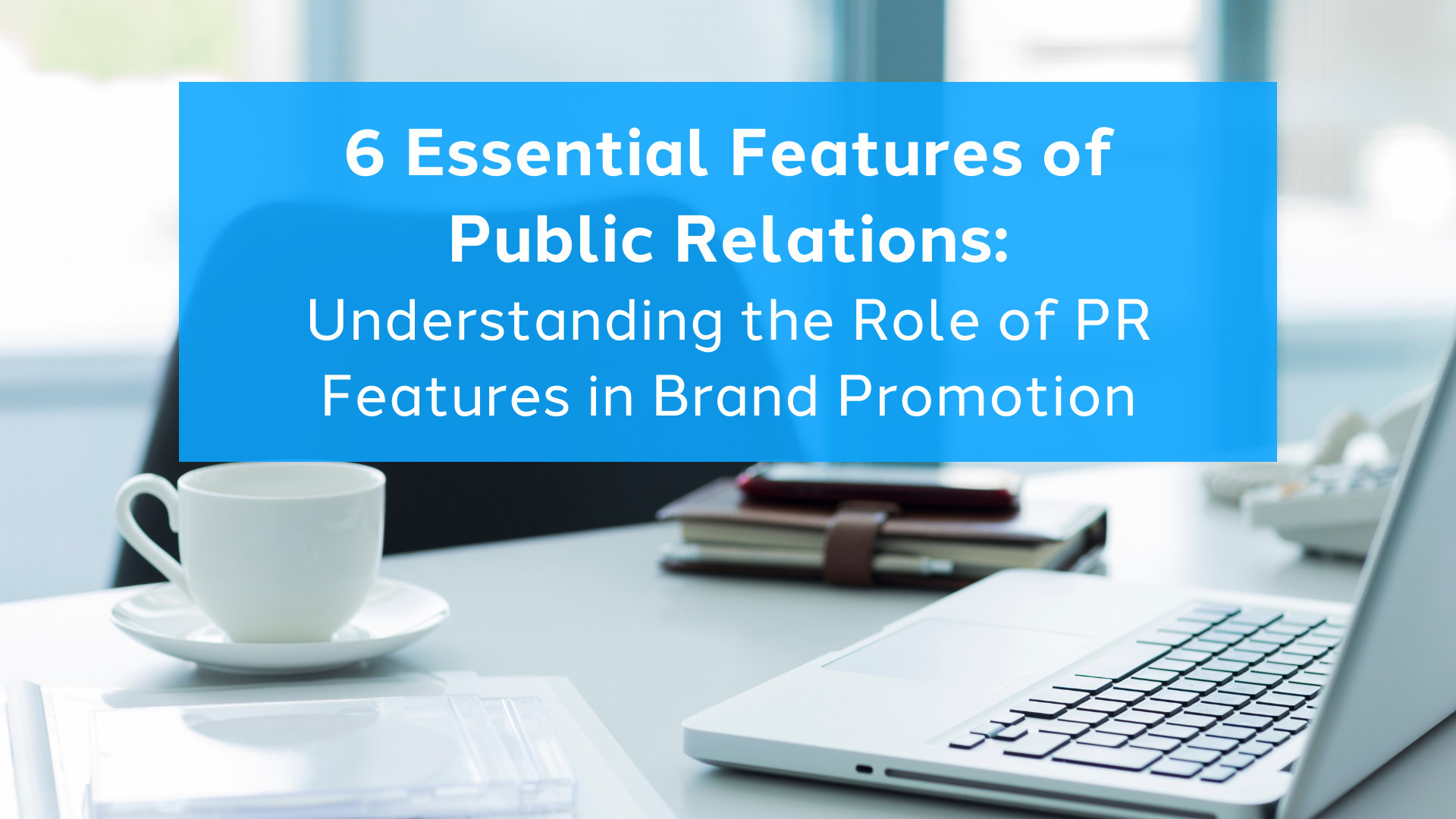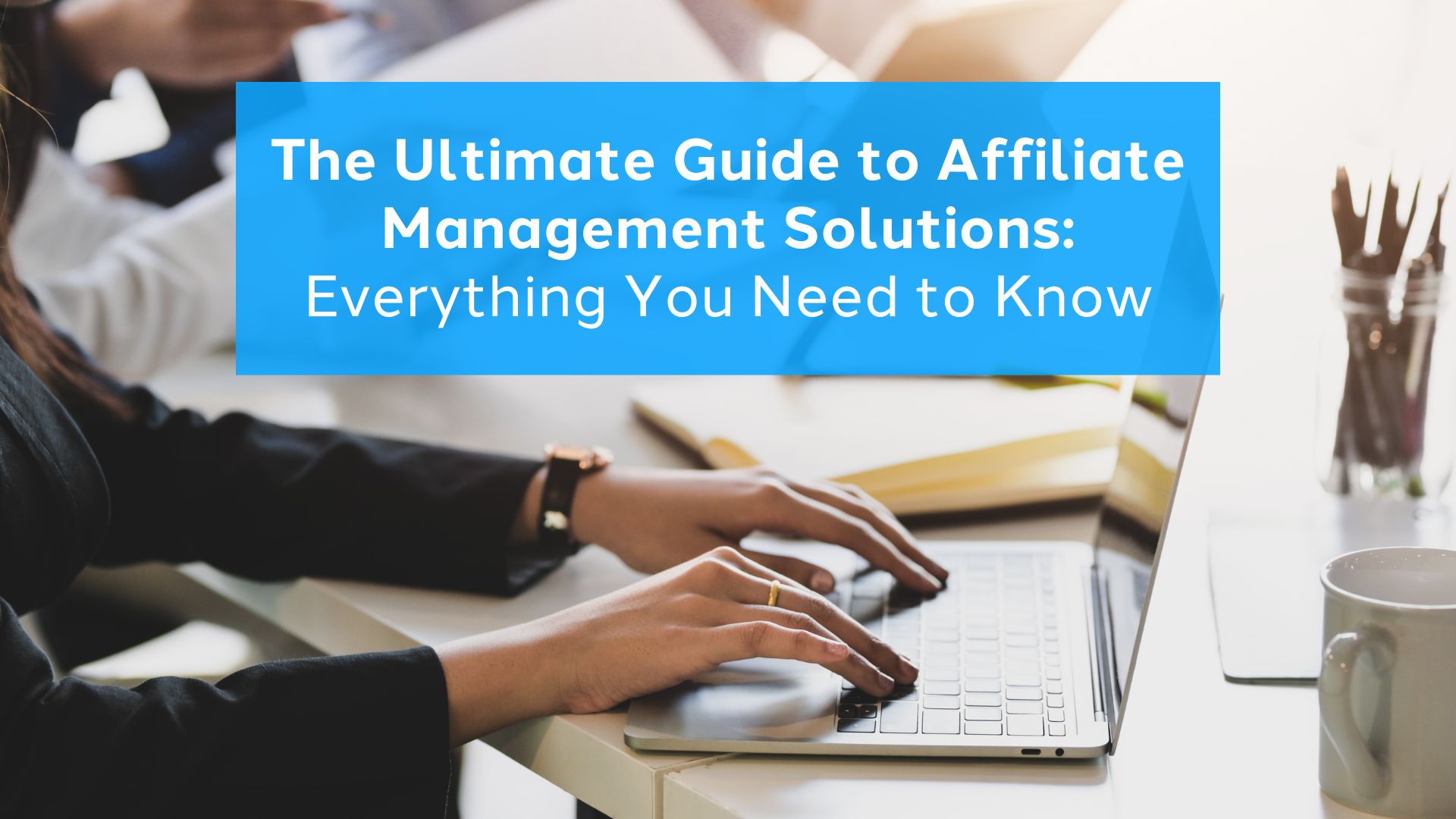Is your brand struggling to capture attention online? Sponsored content offers a solution. This article will explain what sponsored content is and how it can help you reach new audiences.
What is Sponsored Content?
Sponsored content is promotional media paid for by an advertiser but created and shared by a brand, influencer, or publisher. It blends seamlessly with the regular content of the platform it appears on.
Terms like “Paid post,” “Sponsored by,” or “Presented by” indicate sponsored content.
You often find this type of content in social media platforms, blogs, and podcasts from trusted publishers like Buzzfeed or Audible. Effective sponsored content aligns closely with the audience’s interests and the topics covered by these creators.
Following Federal Trade Commission (FTC) guidelines ensures transparency and maintains trust with your target audience.
Key Differences Between Sponsored Content and Native Advertising
To help you distinguish between Sponsored Content and Native Advertising, we have outlined the key differences in a concise table format:
| Aspect | Sponsored Content | Native Advertising |
|---|---|---|
| Creation | Created by another entity and shared by the sponsor | Created and paid for by the brand itself |
| Purpose | Promotes an organic audience experience | Often leads directly to conversions |
| Consumer Preference | Preferred over banner ads by consumers | Less preferred compared to sponsored content |
| Design | May not always match the platform’s design | Matches the platform’s content and design (IAB definition) |
| FTC Disclosure | Requires clear, unambiguous language and prominent placement | Requires the same level of disclosure |
Understanding these distinctions can help improve your advertising strategy. You can leverage the strengths of each type to meet specific goals.
Types of Sponsored Content
Types of Sponsored Content: Sponsored content comes in various forms that can boost your marketing strategy and increase audience engagement. Read more to discover how each type can benefit your brand.
Sponsored Articles
Sponsored articles have transitioned from print media to blogs and online news sites. For example, Sleep Number showcased their products through Huffington Post with a quiz and slideshow.
Sponsored articles immerse readers in engaging content while promoting a brand.
According to a Nielsen and Mode Media study, consumers read sponsored articles for an average of 2.5 minutes. This type of advertorial complements traditional advertising by integrating seamlessly with the editorial content on your website or news platform.
Sponsored Social Media Posts
Sponsored social media posts allow brands to reach a wider audience. Instagram, for example, has over 2.5 million posts tagged with #sponsored. This statistic shows the vast opportunities available for increasing brand visibility and engagement.
Use platforms like Facebook and Twitter to connect directly with your target market.
Examples include CR7 Footwear’s casual post with Cristiano Ronaldo or Lulus sponsoring Lexi Mars for graduation outfit ideas. Another is Tractor Supply’s partnership with dog influencer Stella exploring their store.
These partnerships help build trust and drive customer interest, making them crucial in content marketing strategies.
Sponsored Videos
Sponsored videos offer a dynamic way to engage your audience. Brands partner with content creators on video-sharing platforms like YouTube and Instagram to reach potential customers authentically.
For example, Hot Ones partnered with TUMS for a sponsored segment that seamlessly integrated product promotion into engaging content.
One successful campaign featured Good ‘n’ Fun using real dog fans to promote dog treats. Michelob Ultra also sponsored a Tastemade recipe video showcasing their beer. These collaborations raise brand awareness efficiently by leveraging influencers and high click-through rates on popular social media platforms.
Sponsored Podcasts
Sponsored podcasts offer a unique opportunity for brands to engage with their target audience in an authentic manner. For example, ZipRecruiter sponsored the “Rise and Grind” podcast by Daymond John, reaching listeners looking for career advice.
In 2018, 17% of marketers planned to incorporate podcasting into their strategies. This indicates its growing importance in digital marketing.
Podcasts like “My Brother, My Brother and Me” (MBMBaM) creatively integrate sponsor messages within their content. One memorable episode featured Totinos during the “Family Fun Hour.” Brands partnering with popular podcasts can enjoy high engagement rates as these shows often have loyal subscribers who trust the hosts’ recommendations.
This approach helps bypass adblock tools enhancing your brand’s visibility on social platforms effectively.
Benefits of Sponsored Content
Sponsored content can significantly boost your brand’s visibility in search results. It also helps build trust and drives engagement with your target audience.
Enhances Brand Visibility
Sponsored content boosts brand visibility by reaching new audiences. For example, sponsored posts on Instagram or TikTok can expose your brand to millions of users. This exposure builds awareness and credibility through the mere-exposure effect.
Engage with influencers who align with your brand values for more impact. Partnering with well-known bloggers or YouTube channels increases reach and trust. Social media monitoring tools like HubSpot help you track engagement and optimize your strategy.
Builds Trust with Target Audience
Building trust with your target audience is crucial. Sponsored content from a trusted publisher can yield a 50% higher brand lift compared to self-created content. This type of content should educate your audience, enhancing your brand’s credibility and memorability.
Use clear disclosures like “Paid post” or “Sponsored by” to meet FTC requirements. These terms ensure transparency and add to the user experience. Properly executed sponsored posts help you become a household name in your industry.
Drives Engagement and Leads
Sponsored content can significantly boost your engagement and leads. Digital media publishers, marketers, and agencies supporting DTC eCommerce often rely on this strategy. Sponsored articles, for example, have an average reading time of 2.5 minutes.
This shows they capture the audience’s attention effectively. Content marketing generates three times more leads than paid search advertising. Use sponsored social media posts or videos to reach a wider audience.
Compliance with FTC guidelines is crucial when using sponsored content. Trust from the target audience grows when you follow these rules transparently. Influencer marketing has proven effective for 80% of marketers, emphasizing its importance in driving action.
Properly crafted calls to action (CTAs) within your content also lead to higher conversions compared to traditional ads like banner advertisements or pay-per-click options.
How to Create Effective Sponsored Content
Understand your audience’s needs to create content that resonates and leads to higher engagement. Read more to find out how.
Understanding Your Audience
Understanding your audience is key to creating effective sponsored content. Market research tools like BuzzSumo and Google Analytics help you understand who interacts with your content.
Look at demographics, interests, and behavior patterns to tailor your message.
Partner with a brand or influencer that shares a similar audience. Ensure the topics align well with both audiences’ interests for better engagement. This collaboration builds trust and increases the chances of reaching potential leads effectively.
Aligning Content with Brand Values
Ensuring your sponsored content aligns with brand values boosts credibility and trustworthiness. Consistency stays key here. Match the tone, style, and message of your content to reflect what the brand stands for.
This alignment makes audiences feel more connected and fosters deeper engagement.
Collaborate closely with sponsors on relevant topics that resonate with their target audience. Use formats like video content or podcasts to make engaging stories that speak directly to the viewers’ interests.
This approach educates while subtly promoting the brand, enhancing both memorability and authenticity.
Measuring and Optimizing Performance
Measuring the performance of your sponsored content is crucial. Use tools like Google Analytics and social media analytics to track engagement, clicks, and conversions. Regularly review these metrics to understand what resonates with your audience.
Optimize performance by tweaking elements based on data insights. Adjust headlines for better click-through rates or alter visuals to grab more attention. FTC guidelines require clear disclosure; make sure it’s both visible and understandable to maintain trust.
By measuring and optimizing, you can ensure higher engagement and achieve better results from your paid media efforts.
Leveraging the Katalys Marketplace for Sponsored Content Success
The Katalys Marketplace provides an efficient and strategic solution for brands looking to tap into the power of sponsored content. It connects advertisers directly with a wide range of publishers, influencers, and media outlets, making it easy to access high-quality sponsored content that aligns with your brand’s goals.
Through the Katalys Marketplace, brands and agencies can:
- Access a Wide Network: Browse a curated list of publishers and content creators across various platforms and industries, from lifestyle blogs to YouTube channels, ensuring your sponsored content reaches the right audience.
- Filter by Relevance: Utilize advanced filtering tools to find publishers and influencers who align with your brand’s values, ensuring that your content resonates with target audiences and drives meaningful engagement.
- Streamline Campaign Management: The Katalys Marketplace simplifies the entire process, from selecting partners to setting up campaigns and tracking performance. You can manage multiple campaigns in one place and receive real-time insights to optimize performance.
By leveraging the Katalys Marketplace, your brand can efficiently scale its sponsored content strategy and achieve greater visibility, trust, and engagement with new audiences.
Conclusion
You now understand the basics of sponsored content. Use this guide to boost your digital marketing strategy. Create engaging, trustworthy content that speaks to your audience. Effective content drives results and builds lasting connections.
FAQs
1. What is sponsored content?
Sponsored content, also known as native ads or native advertisements, are paid articles or posts that blend seamlessly with the platform’s regular content. They aim to provide value while subtly promoting a brand.
2. How do advertisers use storytelling in sponsored content?
Advertisers use storytelling to engage readers and make the message more relatable. By weaving their products into compelling narratives, they can capture attention and convey their message effectively.
3. What role do social media influencers play in online advertising?
Social media influencers, such as fashion bloggers or food bloggers, endorse products through platforms like Instagram stories. Their recommendations often feel more authentic and trustworthy to followers.
4. Why is SEO important for creating effective sponsored content?
SEO helps ensure that your sponsored content appears in search results when users look up relevant keywords. This increases visibility and drives traffic to your landing page or website.
5. How does banner blindness affect online ads?
Banner blindness occurs when users ignore display ads because they recognize them as advertisements at a glance. Native ads help combat this by blending into the surrounding content more naturally.
6. Can podcast sponsorship be considered a form of native advertisement?
Yes, podcast sponsorships fit within native advertising as they integrate promotional messages into the show’s format without disrupting its flow, providing value to both listeners and advertisers alike.


